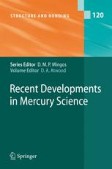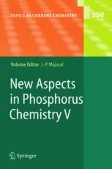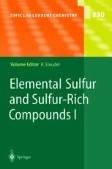Search
Search Results
-
Carbene Complexes of Heme Proteins and Iron Porphyrin Models
The possible formation of carbene complexes of cytochromes P450 enzymes in various metabolisms of xenobiotics is first described. In view of these...
-
Ferrocene–Peptide Bioconjugates
This chapter sketches an outline of ferrocene–peptide bioconjugates. A variety of ferrocene–peptide bioconjugates have been designed to induce...
-
Catalytic Nickel–Iron–Sulfur Clusters: From Minerals to Enzymes
The geochemical theory of the origin of life proposes that primordial, pre-biotic reactions were carried out in a metal-sulfide-rich environment...
-
Sequentially Palladium-Catalyzed Processes
Sequentially palladium-catalyzed reactions consist of combinations of identical, related, or significantly different palladium-catalyzed processes...
-
Structural Aspects of Layered Double Hydroxides
Layered double hydroxides (LDHs) have been known for a considerable time and have been widely studied. The basic features of their structure,...
-
n-Body Decomposition Approach to the Calculation of Interaction Energies of Water Clusters
A new methodology is proposed in which large basis set MP2-level calculations can be extended to water clusters with as many as 50 monomers. The...
-
Multiporphyrin ArraysAssembled Through Hydrogen Bonding
Although relatively weak in isolation, composite H-bonds can be used as an advantage for the assembly of relatively robust and well-defined arrays...
-
Axial Coordination to Metalloporphyrins Leading to Multinuclear Assemblies
The use of axial coordination to metalloporphyrins is discussed on the basis of constructing multinuclear complexes. Starting with single...
-
Poly(mercaptoimidazolyl)borate Complexes of Cadmium and Mercury
The coordination chemistry of bis- and tris(mercaptoimidazolyl)borate ligands with both main-group and transition metals is rapidly expanding....
-
Mercury Removal from Water
Mercury pollution in water is a serious threat to natural ecosystems. Various methods and technologies are in use to remove mercury from the...
-
Intermolecular Interactions via Perturbation Theory: From Diatoms to Biomolecules
This article is devoted to the most recent, i.e. taking place within the last few years, theoretical developments in the field of intermolecular...
-
The Rise of Organophosphorus Derivatives in π-Conjugated Materials Chemistry
This chapter concerns the synthesis and properties of π-conjugated oligomers and polymers containing phosphorus moieties, an area of increasing...
-
Two-Component Scenarios for Non-Conventional (Exotic) Superconductors
The possibility of superconductivity is analyzed within models where two components are present. Here both components may be non-superconducting on...
-
Artificial Host Molecules for the Sensing of Anions
The foundations of supramolecular complexation of anions by abiotic host compounds are evaluated, with the purpose of determining their qualitative...
-
Development of Technetium-99m and Rhenium-188 Radiopharmaceuticals Containing a Terminal Metal–Nitrido Multiple Bond for Diagnosis and Therapy
The chemistry of nitrido complexes of technetium has played an important role in the search of new Tc-99m radiopharmaceuticals and in providing...
-
Arylation Reactions via C-H Bond Cleavage
Various carbon nucleophiles having acidic C–H bonds, including active methylene compounds, ketones, aldehydes, esters, and so on, are arylated with...
-
New P-Chirogenic Phosphine Ligands and Their Use in Catalytic Asymmetric Reactions
This chapter is concerned with an update on the preparation and applications of optically active phosphine ligands which bear the chiral center at a...
-
Liquid Chromatography under Critical and Limiting Conditions: A Survey of Experimental Systems for Synthetic Polymers
At the interface between the entropic size exclusion separation and the enthalpydominated liquid adsorption chromatography it is possible,...
-
Liquid Sulfur
The molecular composition as well as the physical properties (including spectra) of liquid sulfur Liquid Sulfur...
-
Laser Application of Polymers
Laser ablation of polymers has been studied with designed materials to evaluate the mechanism of ablation and the role of photochemically active...
